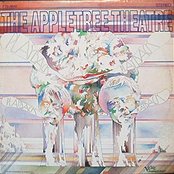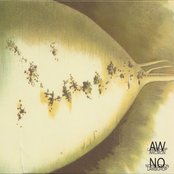
Sandhills House is shown on this Ordnance Survey vector mapping used in Walsall Council’s planning system. Click for a larger version.
Last weekend, I made a surprisingly popular enquiry about Sandhills House, Shire Oak, following the spotting of a lovely piece in the Newspaper Archives about wartime air-raid rescue practice there in 1940 – I’ve been surprised at the level of interest there.
I made a glaring mistake in my article, though: I wrote the following:
The first question is, where exactly was Sandhills House? Is it the big house that’s now a care home on the left as you head downhills to Lichfield, where Ralph Ferrie once lived, or was it the farm? The big house is now called Shire Oak House. If that’s the place, why the name change? I can’t find it marked on maps, but it’s clearly an important place as the same paper records its sale in 1925.
It has become clear I was talking out of my arse and Sandhills House is what many of us commonly think of as the farmhouse at Home Form, which from the above modern map is split into two ‘wings’.
Sandhills House appears to be the north-eastern wing of the building which can be seen from the A461 Lichfield Road. Thanks to all including Reg Fullelove who put me right!

Home Farm and Sandhills House from Bing! Maps bird’s eye view imagery. Sandhills House is on the lower right side, Home Farm on the upper left.
This goes to demonstrate something: I looked at old mapping from the National Library of Scotland archive. I looked at Landranger and Pathfinder mapping. But I didn’t look at modern maps quite closely enough. Never forget the old tools like maps in research – but don’t just check the easy ones!
I’m still interested in Sandhills House and the families who lived there: I was surprised and interested to note the standing of Josiah Lane, of whom there has been little mention here before – he seems to have been quite an entrepreneur.
I’m also interested in the Brawn family, who lived there until 1925. They were also movers and shakers in their day, with Mr. Brawn causing fine, upstanding Mr. Harrison some electoral embarrassment…
Brawns also, of course, gave their name to Brawns Wood which used to stand between the canal and Home Farm.
Sandhills House was sold by action in 1925, when presumably the Lane family purchased it.
What can we find from the historical records about Brawns and Sandhills House?
All comment welcome: please do so on this post or mail me: Brownhillsbob at Googlemail dot com. Cheers.


 RSS - Posts
RSS - Posts








Would these be the same Brawns that owned the limestone mines and kilns in Daw End?
Hi Linda
This is interesting, I’d never made the connection. part of the farm is known as Lime Barns, and they were (I think) Lime Masters, and there was a canal arm (now lost) to the farm. It’s often been idly debated what Brawns did to merit the canal arm, and what their connection with lime was.
I could be wrong but I believe Brawns bought the land of Cotteril in the 1840s. (mumble, may be wrong)
Cheers
Bob
I would be very interested in what you might be able to find out about this place – as this has and still is my dream house and I have always wondered about a its history, so I will be watching with bated breath.
Hi Bob
is that a lime kiln in the photo. grey stone wall, by the blue barn door? Oral tradition is that lime was burnt there…and the canal narrowboats also used the canal arm to take fresh straw to the stables in Birmingham / Walsall and brought, erm manured straw back to the farm. I thought Mr Brawn was connected with brick making..? (source: local lady neighbour, some years ago) I dont recall seeing a pond down the drive, though. I wonder if the little estate chapel is still there.
kind regards
David
David, what makes you think it was an estate and not just a farm?
I’m looking up censuses and will report back, but where was Brawn’s Wood?
The Wood was between the canal at Catshill and the farm, around the lost canal arm. On maps it gets smaller and smaller until it was finally removed in the 1980s.
Oh and am I thinking rightly that Ivy Cottage stands towards the top of the hill on Barracks Lane?
Not sure about that, will check!
Thanks, Bob. Should have realised from your post and the old OS maps! I think the “Forest House” of 1911 was shown on the 1880s OS as Plantation Farm.
A long time occupier was a certain George Brawn, farmer and Justice of the Peace. I think this probably deserves a post of its own. I’ve found news reports of his funeral and I’m sure there is much more awaiting discovery.
George lived at Sandhills House from 1851 (when his father John was the proprietor, and may have been born there in 1843) to at least 1911. His occupation as an adult was farmer and later JP. The censuses make no mention of limeworks, but that might have been earlier.
Anyway, from census records, I’m pretty sure Sandhills House always did refer the place shown on the Council’s OS map.
I guess that when the Lanes bought the House about 1926, they changed the name to Sandhills House, from what used to be known as “The Sandhills”.
But it was specified as Sandhills House in the 1891 and 1911 censuses.
The advert from 1925 names Sandhills House, and there are mentions as this before and after 1925. However it seems that the OS Maps for 1903, 1921 and 1938 refer to it as The Sandhills.
The 1883 just says Sandhills, probably referring to the district. Back in 1867 John Brawn was the boss (his father?) and also referred as Sandhills.
One thing that George Brawn and William Bealey Harrison had in common was that they both cited the question of Home a Rule for leaving the Liberals and joining the Unionists. Maybe an excuse to change to the side that would look after their interests?
On G Brawn’s death it was reported that he was one of the largest potatoe growers in the Midlands, his produce being sent to all parts of the country and the Colonies.
There are many mentions of a Brawn family concerned with Lime around the Rushall and Daw End area at the same time as John/George Brawn at Sandhills.
However, for the Brawns of Sandhills, I cannot find any mention of lime. They seem deeply involved in agriculture.
One for David!
White’s Directory 1851…Brawn George, brick and tile maker Walsall Wood.
I think Pedro is right.
John Brawn (1812-1880) was indeed George’s father and in 1841, 1851 and 1861 farmed at Shaver’s End, Shelfield (I think this was between Walsall Wood and Shelfield.
In 1871 the family is recorded at Sandhills (famer of 543 acres employing 19 labourers, 4 boys and 8 women) and in 1881 George (1844-1913) was the head, farming 250 acres – from professional experience this is about the size of the current estate -, living with sisters and servants. George was married in 1885 to the splendidly-named Caroline Cholmondeley Goodwin Norris of Sunbury, Middlesex.
In 1891 is the first census mention of Sandhills House, home of the Brawns.
In 1911 Sandhills House is named again, and their are other named buildings, including: Forest House, Brawn’s Wood, Sandhills; Mrs Brawn (John’s widow) of The Cottage; Leopard, Stone House; and The Lodge. I think these all belonged to Brawn.
On the OS mapping from the 1880s the house on Lichfield Road is named as Bleak House. Unhappily, this census gives no specific property details. Bleak House is not named between Sandhills House and Chester Road. It is listed, though, in Kelly’s Directory of 1896 (thanks to Sue Lote’s website); can’t find the occupier in the censuses, though.
Also in Kelly’s 1896 is James Brawn, farmer, Bosses Farm. Where? Could have been George’s brother. George Brown (sic) is listed simply as farmer, Sandhills.
To be continued …
August 1844 Shavers End farm to be sold by auction, approx 122 acres…Mr John Brawn tenant will show lands
June 1892…Fire broke out at farm of James Brawn, the Bosses, Shenstone doing £300 damage
George died in 1913 and was buried at Stonnall on 24 January. The funeral seems to have been a quite grand affair (befitting someone of considerable wealth and standing and apparently well-liked). His estate was auctioned on 30 July 1918 at the Stork Hotel, Walsall (Birmingham Daily Post 20 July 1918).
The particulars include:
The estate of the late George Brawn Esq.
VALUABLE FREEHOLD ESTATE
(WITH THE MINES AND MINERALS THEREUNDER)
Of about 369 acres
Comprising of SANDHILLS FARM, with superior RESIDENCE approached through an avenue of beech and sucamore trees, with two sets of farm buildings, four dutch barns, seven COTTAGES; area about 288 acres of capital ARRABLE and PASTURE LAND and ORCHARDS.
A block of ARABLE LAND with a canal frontage, area 58 acres.
Two fields of ARABLE area 22.5 acres
The desirable RESIDENCE known as “HILL HOUSE”, Shire Oaks.
Six cottages.
Now, Sandhills Farm is marked on the 1883 OS mapping a short way north of the main house indicating the house at the end of the next drive along from the avenue.
Hill House? The house on the hill on Lichfield Road? I have not found any other mention of this name.
The Probate Calendar records:
BRAWN George esquire JP of Sandhills Walsall Staffordshire dies 20 January 1913 Probate Lichfield 25 June [1913] to Caroline Cholmondeley Goodwin Brawn widow. Effects 15,617 7s.
Over the road stood the Leopard Inn. It came up for sale in 1856 and described as old and established!
Could be the usual agent overhype, but it was listed in White’s 1834 directory and was on the turnpike road.
Leopard Inn loses spots …
Lichfield Mercury 4 March 1910. Tenant Edward Ball, owner Lichfield Brewing Company. The house was described as “small, and structurally inconvenient, and … redundant”. The weekly trade amounted to one hogshead [420 pints or 238.5 litres], three dozen bottles and two and a half gallons [11.4 litres or 15 bottles] of spirits. The house was scheduled for compensation with owners consent, i.e. closed for good.
I guess 60 pints and 5 bottles of beer and 2 bottles of spirits a day is not much trade, but I’ll bet the old place was missed. Presumably, like lots of other places, it was mainly looked after by Mrs Ball while Edward did the heavy lifting when back from the pit.
In the 1911 census Edward Ball, miner, was still there at the “(Late) Leopard Inn”.
Andy, you sent me a message via Ancestry.com. I am not a member and can’t use the reply service. My wife’s gg grandfather was John Brawn, so I do have some information for you, including a few pictures.
Can you e-mail me so we can exchange notes.
Ninian
Thanks, Ninian
To avoid publicising personal email addresses, the normal thing would be for you to email a brief message to BrownhillsBob at Googlemail dot com – as he puts it – and he will forward to me. Then we can share info.
Cheers!
Andy
Hello,
I am a Brawn (or was before I got married). My Grandparents owned Brawns Grocery Store that used to be on Brownhills HIgh Street until the mid 70’s.
My G.G.Grandfather was Samuel Brawn (brother to George Brawn mentioned above). The family were farmers during this period but their Grandfather (or G.Grandfather cant remember off the top of my head) was John Brawn who was a canal engineer who worked on the Wyrley & Essington Canal and there is a bridge named after him http://www.waterwayroutes.co.uk/wr/photos-months-070908-1214.html
Jenny x
Thanks, Jenny. George’s father John was definitely a farmer and, being born about 1814 was too late for the W&E, which opened in 1797. Will see what I can find out about John’s father and engineering.
From the link above the bridge is in the OS Waterways guide as Brawns Work Bridge at Rushall. This could be the link between the limestone Brawns of Walsall and farming Brawns.
If I remember correctly there was a Brawn involved in a number of limestone partnerships around 1830. These included W Harrison and George Strongitharm.
George’s father, grandfather and g.grandfather were all called John. He also had a brother called John!
Great fun when trying to get your head around who did what & when 🙂
Jenny, we need to get in touch. My wife is g grandaughter of James Brawn, brother of Samuel. Suggest we use e.mail.
Ninian
Jenny, this maybe a long short but was your grandparent Felix?
John the farmer, father of George, had firm views on agriculture and had at least two letters published in the Staffs Advertiser around 1867. If you are interested let me know and I will send them to Bob
Brawn – engineer.
Brawn’s Bridge, Radley’s Road, Rushall. Plaque here – http://www.waterwayroutes.co.uk/wr/photos-months-070908-1214.html – “Birmingham Canal Navigation Company / Brawn’s Bridge / John Brawn Engineer 1792-1801”.
John (jnr) was baptised at Rushall on 4 Jan 1814, son of John Brawn and Maria Parson. They married on 23 Mar 1809 at Rushall.
John (snr) (I think) was born 1777 at Kidderminster. He was buried age 61 on 1 Oct 1838 at Rushall, St. Michael. Abode: “Shaver’s End or Shelfield House”.
Electoral register 1833, Rushall, [qualification:] land, as occupier, Ryecroft Farm, Rushall.
And 1837, Brawn John, …, land & lime works £50 per annum as occupier, Shavers end farm & Winterley Lime works.
So there is the limeworks connection!
May 1856 john Brawn advertises lime from Winterley Lime Works near Walsall and Cann lane, Wolver
On the !2 December 1947 the Lichfield Mercury report the death of Josiah Bowen Lane, of Sandhills House, the well-known industrialist from Brownhills…
He started work with his brother Reginald over 40 years ago at the Brownhills Chemical Works, which was founded by his father in 1840. These were later merged with the Midland Tar Distillers, of which he became a director. In the 1920s his main interests were transferred to the Lancashire area, and later to other parts of the country….
…in his youth he played cricket and football for local Brownhills sides, and was chairman of the Stonnall Pig Club and president of the Walsall Wood Horticultural Society.
I see Jenny is the gg grandaughter of Samuel Brawn. My wife is also a Brawn. Her g grandfather was Samuel’s brother James of the Bosses. Can you confirm where Samuel lived in Rushall? The Census just says Lichfield Road. Also John, his eldest brother, was left the Lime Works. Any idea where that was located? If you are interested in the most complex of Wills I can let you have a copy of John’s Will in which he leaves Samuel a substantial legacy.
If this is Samuel Essington Brawn he lived in later life in Lynn Lane, Stonnall, though I’m not sure of the location because the 1871 census is somewhat parsimonious with place names.
The Lichfield Road address was at Shaver’s End. On the OS 1st edition this is marked between Shelfield and Rushall where the Anchor Brook crosses the A461, more or less at the end of Deepwood Close – . You can find the 1st ed at http://www.visionofbritain.org.uk/maps/results.jsp?xCenter=3162500&yCenter=3175000&scale=63360&mapLayer=nineteenth&subLayer=first_edition&title=Ordnance.
If you find the location on Google Earth and switch to 1945 you can see the farm buildings on the spot! On Street View it is where the white building is just north of Travis Perkins (locals will recall it as Bird’s timber yard). That building looks quite old and it’s big enough for a farm house, I wonder …
According to the Staffordshire Advertiser 5 Oct 1833 there was to be an extensive sale of farming stock and equipment “belonging to Mr John Strongitharm [a familiar name], who is declining the farming business”. The same paper 10 Aug 1844 announcing another sale of shaver’s End Farm names John Brawn as the tenant. In 1860 Mr John Brawn of Shaver’s End Farm is named as a judge for the Shenstone and Weeford Agricultural Association.
Nonetheless, according to the Birmingham Daily Post 25 Aug 1882 there was still a Mrs Brawn at Shaver’s End who was judging needlework at the Walsall Wood Cottagers’ Exhibition.
January 1834 partnership dissolved…Thomas Cooper, John Brawn, George Strongitharm, and executors of G Strongitharm deceased, as lime and coal masters at Daw End.
Also In 1834 James Brawn, Sandhill, had game certificate.
November 1847…mysterious death…inquest on body of a man who had been found in a state of insensibility at Messrs Brawn’s lime wharf, on the Birmingham Road, contiguous to the city of Lichfield….
Samuel Essington Brawn is a different person, he was the great uncle of George & Samuel Brawn. Didn’t know about the 1945 Google Earth so will have to check that out.
There is an excellent 1885 map showing Ryecroft Farm, Shelfield Farm, the Winterley Works and Brawn’s Bridge leading to The Radleys (Radley Road). The link is http://maps.nls.uk/view/101597366
Bosses farm still exists about a mile south east of Stonnall on Wood Lane. There are some old building there, too.
Hi Bob
this is wonderful research by the Two Big Guns, aka Pedro and Andy, and co ltd.. Many, many thanks.. Dare I ask…
.. who lived in that house before the Brawn family?
kind regards
David
In the 1841, 1851 and 1861 censuses, though the address is a general “Sandhills”, there is James Brawn, born about 1892, Wolverhampton. In 1841 he is described as “Lime Master”, and in 1851 as farmer of 360 acres, employing 12 labourers and brickmaker employing 190 men and 7 boys (if I have read it correctly). In 1861 he was farmer 160 acres with 5 men and 1 boy. I think James died in 1863, which is probably why the John and George Brawn we have been following moved to Sandhills. I’m not clear on relationships, but suspect Ninian will know more. I wonder if there was a will …
I have the Codicil to James Will, and the whole of John’s Will. John (father of George) lived at Shaver’s’ End. He inherited Sandhills from his uncle James who lived there until his death in 1863. John then moved to Sandhills, and then left it in turn to his son George. George’s brothers were John, lived at Mellish Road Walsall, Samuel, inherited Shaver’s End, and James who used his inheritance from John to buy the Bosses. Financial provision was also made for the other children.
Thanks, Ninian. That rounds things of nicely.
The earliest record I can find online for James Brawn at Sandhills is the electoral roll for 1833. I wonder if he was the first owner after enclosure, which I think was in 1818.
Well, not quite rounded off. I have found a couple of books on the canals from which I learn that John Brawn (1750 to 1801) was the sole contractor for the Wyrley and Essington Canal, surveyed by William Pitt. Prior to that he was a contractor on the Dudley Canal and on the Southampton and Salisbury Canal. He was born in Kidderminster. When he died in 1801 it was left to his son to finish of the Daw End Branch. This son lived at Shaver’s End, Shelfield Farm, where he had a lime works. He was also a partner in Strongitharm, Cooper and Co who had the Winterley Works, just south of Brawn’s Bridge and north east of Rushall on the canal. John Brawn also had a works there, probably making bricks. James Brawn, his brother, was also a ‘lime master’ and lived at Sandhills which he left to his nephew John, father of George, when he died. Hence the lime kiln/brick works at Sandhills and the cut to the canal. The Brawns also had wharfs in Lichfield and Walsall. When this John died and left Sandhills to George he also left bequests to other members of the family and George’s brother James used his to buy the Bosses where my wife’s maternal grandfather, E M Brawn, was born.
Just as it ought to be in the black country – from canal construction through lime, bricks and cement, to fine farms and country gentlemen.
Ninian
Not quite sure about the last paragraph. Many of the Black Country industrialists became country gentleman farmers; living a distance away from the conditions of the workers that provided them with the finance.
A chap pinched a ewe from Strongitharm’s farm. He escaped the death penalty by being transported to Van Diemen’s Land.
Can you provide a name and date? I’ve wanted to do something about transportation, but have been waiting for someone local(ish).
Come up before…
http://brownhillsbob.com/2014/01/31/ship-ahoy/
Could have been William Darby, crime March 1830… Will check further
Thanks, Pedro. I should have remembered this. I suspect I looked at this at the time and found nothing much to add, but will have another go. With my own “relative” I was lucky to make contact with someone in Australia studying the fate of prisoners on the ship Sarah. Who knows, maybe someone is studying the John. Even if not, there are people willing to help with Australian records.
The Brawn’s involvement in the Wyrley and Essington canal is extensively covered in the book by Ray Shill…Wyrley and Essington Canal through time.
At the outset Ray says the building of the waterway fell to Wolverhampton Engineer John Brawn
…the Brawn family were stonemasons based in Wolverhampton, and Samuel together with his sons were paid by the Staffs and Worcs Canal Co for work that assisted building the waterway in 1766-72.
He goes on to describe the involvement in the Company of John Senior and John Junior through to 1802. From that time onwards the engineer was Richard Stevens.
It is also stated that John had problems getting his carpenter from Hampshire. His brickmaker was also from Hampshire.
Sandhills arm built to serve the estate belonging to George and James Brawn.
A bank of limekilns were added to the Birmingham Road wharves at Lichfield by Limemasters the Brawn Family.
Thanks, Pedro. I used the Internet to look at Ray Shill’s book, so I missed the reference to Samuel Brawn the stonemason from Wolverhampton. Very interesting.
Pingback: Brains and Brawns | BrownhillsBob's Brownhills Blog
And one for David….
Dec 1862, Walsall Wood Blue brick and Tile Works to Let.
On turnpike road between Walsall and Lichfield worked by Messrs Brown and Co.
Brawn of course!